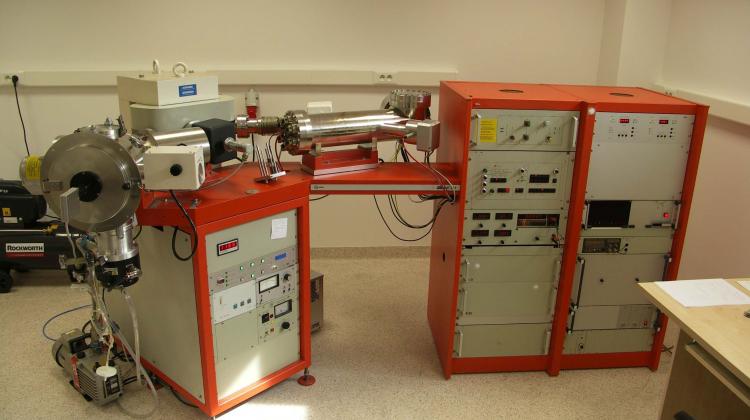Development of the world's first electrically powered polymer laser

The world\'s first electrically powered polymer laser has been developed by scientists at Adam Mickiewicz University in Poznań. According to its creators, in the future the laser can revolutionize medicine and electronics.
Work on the creation of the polymer laser has been carried out in Poznań for over 10 years. Research centres around the world have been working on similar devices.
According to Prof. Jerzy Langer, head of the Laboratory of Physical Chemistry of Materials and Nanotechnology, Faculty of Chemistry, Adam Mickiewicz University, electrically powered polymer laser is a cheaper solution than the previously used lasers, its production process is faster, and it can have a more versatile use in industry an medicine.
The researchers were able to obtain laser action using a conductive polymer - polyaniline. It is the first Polish conducting polymer, obtained in the same laboratory at Adam Mickiewicz University in the mid 1970s.
"For many years the world\'s leading laboratories have sought to create a polymer laser powered by electric current. For people working in this field it is the Holy Grail. Polyaniline, which we have used, showed light effects that deviate from the normal emission. The result of our research on this polymer is the laser" - Prof. Langer told PAP.
The solution created by Poznań researchers is currently at the stage of laboratory device. "Active material is a tablet with a diameter of 3 mm and 0.5 mm thickness; it can be further miniaturized. Further work is needed to make the laser more handy and improve its operation stability" - he said.
"In the future, the new laser may be used in optoelectronics; wherever there is a need to generate a modulated laser radiation. Our solution can replace the currently used lasers. The advantage over current solutions is mainly the use of a completely new type of active material, its lower cost and significantly faster production technology" - said Prof. Langer.
The scientist emphasised that the new laser is capable of generating light of different wavelengths.
"We can obtain monochromatic or polychromatic light, from ultraviolet to infrared. This is an extremely valuable property in the case of lasers" - he added.
According to the Adam Mickiewicz University Press Office, a report on the results of research of Poznań scientists has been published recently in the Journal of Materials Chemistry C, issued by the British Royal Society of Chemistry.
PAP - Science and Scholarship in Poland
rpo/ dym/ mrt/
tr. RL
Przed dodaniem komentarza prosimy o zapoznanie z Regulaminem forum serwisu Nauka w Polsce.

















